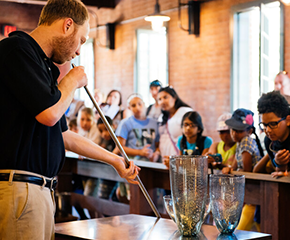Cradle Scythe, circa 1860
Add to SetSummary
Nineteenth-century farmers needed to harvest grain quickly before time or weather could destroy it. Harvesters would swing the cradle scythe's blade through ripened fields. The cut grain would fall onto the wooden fingers -- the cradle -- where it would be dumped in neat rows ready for gathering. Skilled cradlers could harvest more grain than those using traditional sickles.
Nineteenth-century farmers needed to harvest grain quickly before time or weather could destroy it. Harvesters would swing the cradle scythe's blade through ripened fields. The cut grain would fall onto the wooden fingers -- the cradle -- where it would be dumped in neat rows ready for gathering. Skilled cradlers could harvest more grain than those using traditional sickles.
Artifact
Cradle scythe
Date Made
circa 1860
Creators
Place of Creation
United States, New York, Auburn
United States, New York, Seneca Falls
Creator Notes
Cradle made by John Porter, likely in Seneca Falls, New York and blade made by David Wadsworth in Auburn, New York.

On Exhibit
at Greenfield Village in Soybean Lab Agricultural Gallery
Object ID
00.4.765
Credit
From the Collections of The Henry Ford.
Material
Wood (Plant material)
Steel (Alloy)
Dimensions
Height: 37 in
Width: 29 in
Length: 50 in





